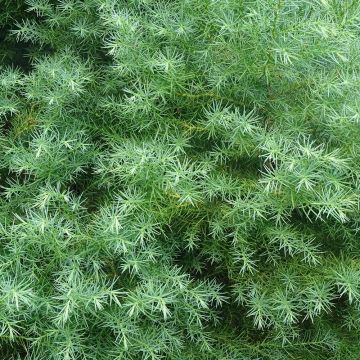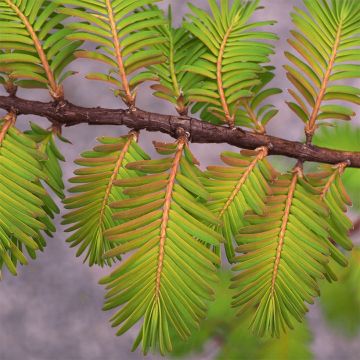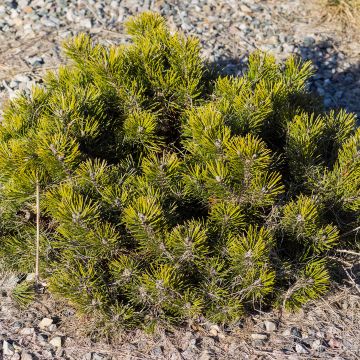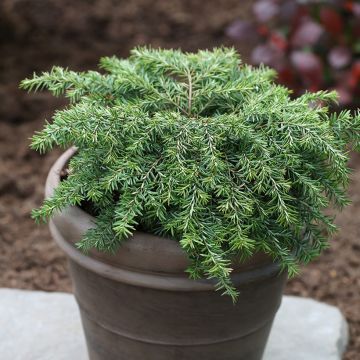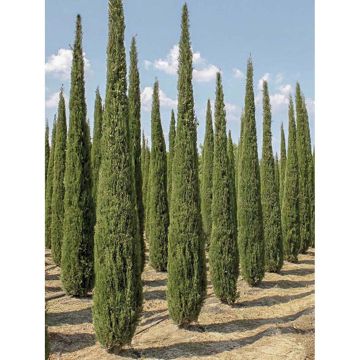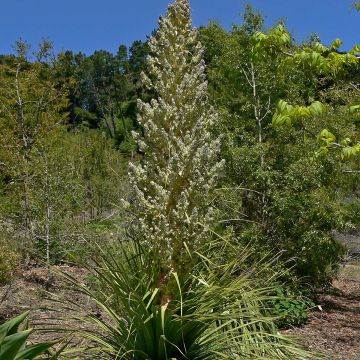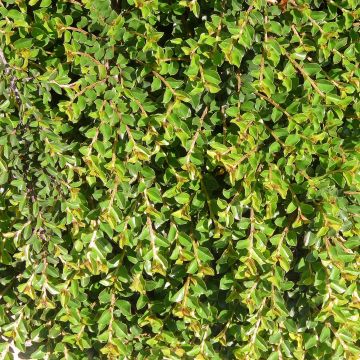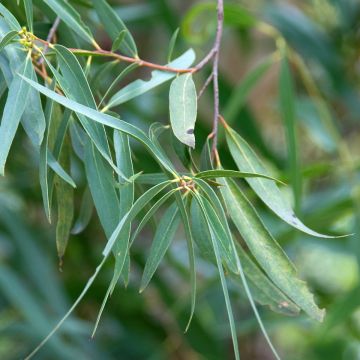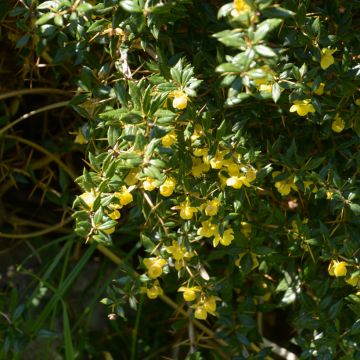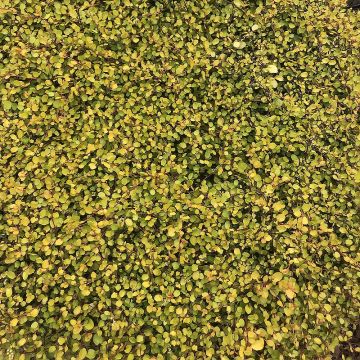

Provence Cypress - Cupressus sempervirens Pyramidalis
Provence Cypress - Cupressus sempervirens Pyramidalis
Cupressus sempervirens var. stricta Pyramidalis
Italian Cypress, Mediterranean Cypress, Pencil Pine
This item cannot be shipped to the selected country
Delivery charge from €5.90
Oversize package delivery charge from €6.90
More information
Schedule delivery date,
and select date in basket
This plant carries a 24 months recovery warranty
More information
We guarantee the quality of our plants for a full growing cycle, and will replace at our expense any plant that fails to recover under normal climatic and planting conditions.
From €5.90 for pickup delivery and €6.90 for home delivery
Express home delivery from €8.90.
Oversize package: home delivery by special carrier from €6.90 per order..
Express home delivery from €8.90.

Does this plant fit my garden?
Set up your Plantfit profile →
Description
Cupressus sempervirens 'Pyramidalis', commonly known as the Italian cypress or Florentine cypress, is a form of this large evergreen conifer with a columnar and narrow habit and dark green foliage. Emblematic of Tuscany, this tree grows rapidly during its early years and can live for 500 years, eventually forming the characteristic silhouette that leaves its mark on Mediterranean landscapes. This cypress is perfect for accentuating an entrance or bringing structure to a large space. It is a valuable tree for southern gardens as it tolerates rocky and poor soils, drought, and strong winds.
Cupressus sempervirens is a species of the cypress family, which is believed to be native to Asia but has been acclimatized to Mediterranean regions for a long time due to its excellent adaptation to drought, wind, and poor soils. In the wild, it is found in dry and open forests, often on chalky soils. Similar to Chamaecyparis, it differs in its rounded branchlets arranged in plume-like clusters around the main axis and its larger cones with woody scales. 'Pyramidalis' is a cultivar obtained from the 'Stricta' form, which can be found in the wild. In addition to its erect branches, it has a more distinctly fastigiate habit than its parent. This is the most commonly planted variety.
'Pyramidalis' is a tall and narrow variety, reaching heights of 10 to 14m (45.9ft) or more, with a spread of 1m (3.3ft) to 1.20m (3.9ft). At the age of 6, under good conditions, it will already have reached a height of 6m (19.7ft). This variety produces fruits, which can weigh down and widen the branches, resulting in a sometimes slightly untidy, yet still charming, silhouette. Growing rapidly while young, 'Pyramidalis' is adorned with aromatic, dark foliage consisting of small blunt leaves with resin glands, on short branchlets that are in turn arranged on erect branches. Like all common cypresses, its wood is very fragrant and produces resin under a relatively thin and fissured brown-grey bark. It is tap-rooted, allowing it to anchor deeply into the soil to draw water and nutrients and withstand even strong winds. It has good hardiness in well-drained soil, around -15°C (5°F). However, its tall silhouette does not tolerate the weight of snow, which can permanently deform it!
The Tuscan cypress 'Pyramidalis' is perfect for framing an entrance, planted in groups of three as was once customary in Provence, both as a sign of welcome to visitors and a landmark for lost travellers indicating a human and welcoming presence, fresh water,, a cozy fire in the hearth. A boon for gardens in rocky areas with stony soil, where few trees thrive, its majestic form structures a garden in a unique way, whether it is contemporary, Italian, or Mediterranean in style. It can also be used as a standalone specimen, surrounded by grey foliage plants (Artemisia, lavender, Melianthus major, Perovskia atriplicifolia 'Blue Spire') or in an evergreen hedge, with Arbutus unedo, Holm oak, common juniper and its varieties, Ceanothus arboreus Skylark, or Eleagnus ebbingei, for example.
The Provence cypress symbolizes immortality. Its fragrant wood, which was once present in all funeral rites, was also burned as incense.
Report an error about the product description
Provence Cypress - Cupressus sempervirens Pyramidalis in pictures
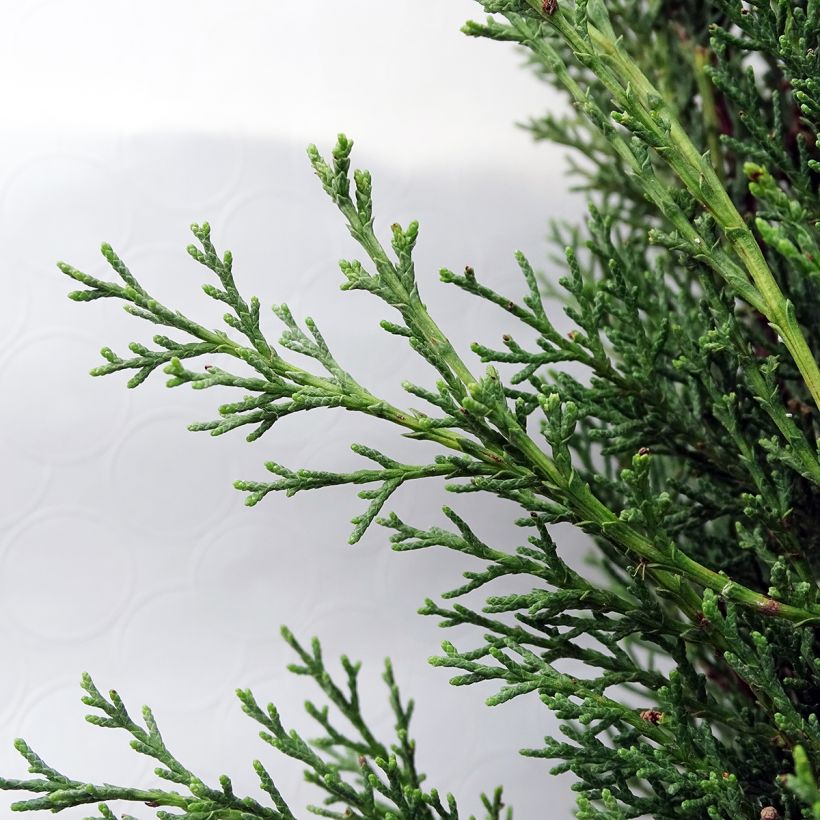

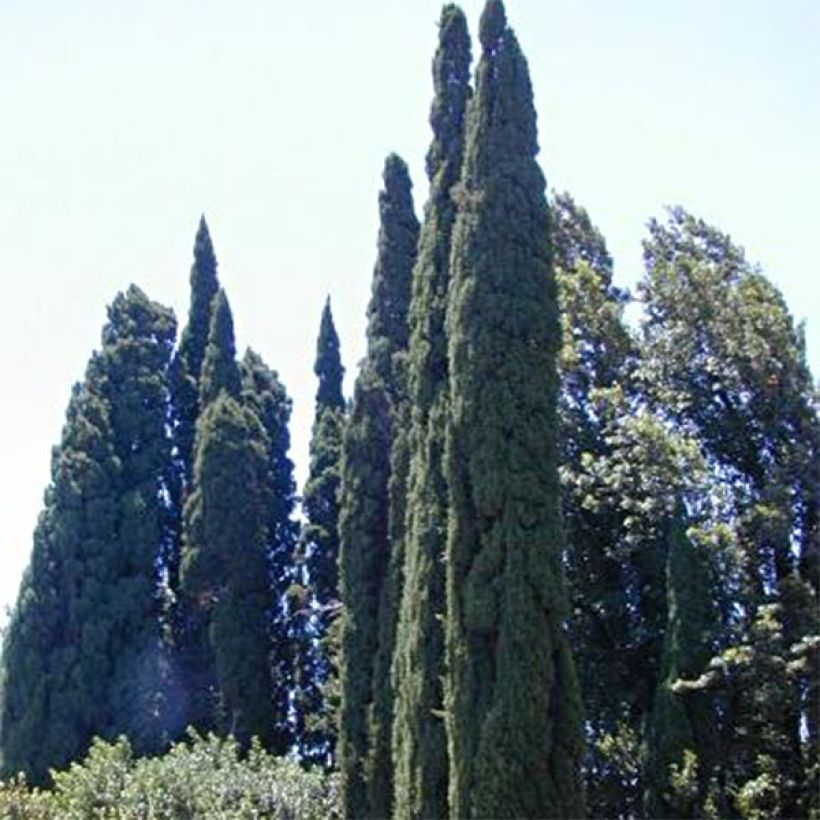

Plant habit
Flowering
Foliage
Safety measures
Botanical data
Cupressus
sempervirens var. stricta
Pyramidalis
Cupressaceae
Italian Cypress, Mediterranean Cypress, Pencil Pine
Mediterranean
atteinterespiratoire
Cette plante peut entraîner des symptômes allergiques.
Evitez de la planter si vous ou vos proches souffrez de rhinite saisonnière ("rhume des foins").
Davantage d'informations sur https://plantes-risque.info
Other Conifers A to Z
Planting and care
Plant the Cypress in a sunny position in well-drained soil, even rocky and poor. Its taproot will find a crack and widen it to go down and find water, often present in the subsoil of limestone formations. It is best to grow it in areas with not too-harsh winters. This plant is hardy down to at least -15°C (5°F) in theory, may not do so well in compact, clayey soil saturated with water in winter, as is the case for many Mediterranean plants. The adaptation to chalk and strong winds (mistral and tramontane) of the sempervirens species makes it a strong element of the Mediterranean landscape. Do not plant hedges too close together, in order to ensure good ventilation. This conifer can be subject to canker (a pathogenic fungus), especially if it is pruned or injured. Its most common parasites are red spiders, aphids, scale insects, and jewel beetles, which are present in hot and dry weather; it is also advisable to spray the foliage in hot and dry weather to prevent mite proliferation.
Planting period
Intended location
Care
-
, onOrder confirmed
Reply from on Promesse de fleurs
Evergreen shrubs
Haven't found what you were looking for?
Hardiness is the lowest winter temperature a plant can endure without suffering serious damage or even dying. However, hardiness is affected by location (a sheltered area, such as a patio), protection (winter cover) and soil type (hardiness is improved by well-drained soil).

Photo Sharing Terms & Conditions
In order to encourage gardeners to interact and share their experiences, Promesse de fleurs offers various media enabling content to be uploaded onto its Site - in particular via the ‘Photo sharing’ module.
The User agrees to refrain from:
- Posting any content that is illegal, prejudicial, insulting, racist, inciteful to hatred, revisionist, contrary to public decency, that infringes on privacy or on the privacy rights of third parties, in particular the publicity rights of persons and goods, intellectual property rights, or the right to privacy.
- Submitting content on behalf of a third party;
- Impersonate the identity of a third party and/or publish any personal information about a third party;
In general, the User undertakes to refrain from any unethical behaviour.
All Content (in particular text, comments, files, images, photos, videos, creative works, etc.), which may be subject to property or intellectual property rights, image or other private rights, shall remain the property of the User, subject to the limited rights granted by the terms of the licence granted by Promesse de fleurs as stated below. Users are at liberty to publish or not to publish such Content on the Site, notably via the ‘Photo Sharing’ facility, and accept that this Content shall be made public and freely accessible, notably on the Internet.
Users further acknowledge, undertake to have ,and guarantee that they hold all necessary rights and permissions to publish such material on the Site, in particular with regard to the legislation in force pertaining to any privacy, property, intellectual property, image, or contractual rights, or rights of any other nature. By publishing such Content on the Site, Users acknowledge accepting full liability as publishers of the Content within the meaning of the law, and grant Promesse de fleurs, free of charge, an inclusive, worldwide licence for the said Content for the entire duration of its publication, including all reproduction, representation, up/downloading, displaying, performing, transmission, and storage rights.
Users also grant permission for their name to be linked to the Content and accept that this link may not always be made available.
By engaging in posting material, Users consent to their Content becoming automatically accessible on the Internet, in particular on other sites and/or blogs and/or web pages of the Promesse de fleurs site, including in particular social pages and the Promesse de fleurs catalogue.
Users may secure the removal of entrusted content free of charge by issuing a simple request via our contact form.
The flowering period indicated on our website applies to countries and regions located in USDA zone 8 (France, the United Kingdom, Ireland, the Netherlands, etc.)
It will vary according to where you live:
- In zones 9 to 10 (Italy, Spain, Greece, etc.), flowering will occur about 2 to 4 weeks earlier.
- In zones 6 to 7 (Germany, Poland, Slovenia, and lower mountainous regions), flowering will be delayed by 2 to 3 weeks.
- In zone 5 (Central Europe, Scandinavia), blooming will be delayed by 3 to 5 weeks.
In temperate climates, pruning of spring-flowering shrubs (forsythia, spireas, etc.) should be done just after flowering.
Pruning of summer-flowering shrubs (Indian Lilac, Perovskia, etc.) can be done in winter or spring.
In cold regions as well as with frost-sensitive plants, avoid pruning too early when severe frosts may still occur.
The planting period indicated on our website applies to countries and regions located in USDA zone 8 (France, United Kingdom, Ireland, Netherlands).
It will vary according to where you live:
- In Mediterranean zones (Marseille, Madrid, Milan, etc.), autumn and winter are the best planting periods.
- In continental zones (Strasbourg, Munich, Vienna, etc.), delay planting by 2 to 3 weeks in spring and bring it forward by 2 to 4 weeks in autumn.
- In mountainous regions (the Alps, Pyrenees, Carpathians, etc.), it is best to plant in late spring (May-June) or late summer (August-September).
The harvesting period indicated on our website applies to countries and regions in USDA zone 8 (France, England, Ireland, the Netherlands).
In colder areas (Scandinavia, Poland, Austria...) fruit and vegetable harvests are likely to be delayed by 3-4 weeks.
In warmer areas (Italy, Spain, Greece, etc.), harvesting will probably take place earlier, depending on weather conditions.
The sowing periods indicated on our website apply to countries and regions within USDA Zone 8 (France, UK, Ireland, Netherlands).
In colder areas (Scandinavia, Poland, Austria...), delay any outdoor sowing by 3-4 weeks, or sow under glass.
In warmer climes (Italy, Spain, Greece, etc.), bring outdoor sowing forward by a few weeks.


































